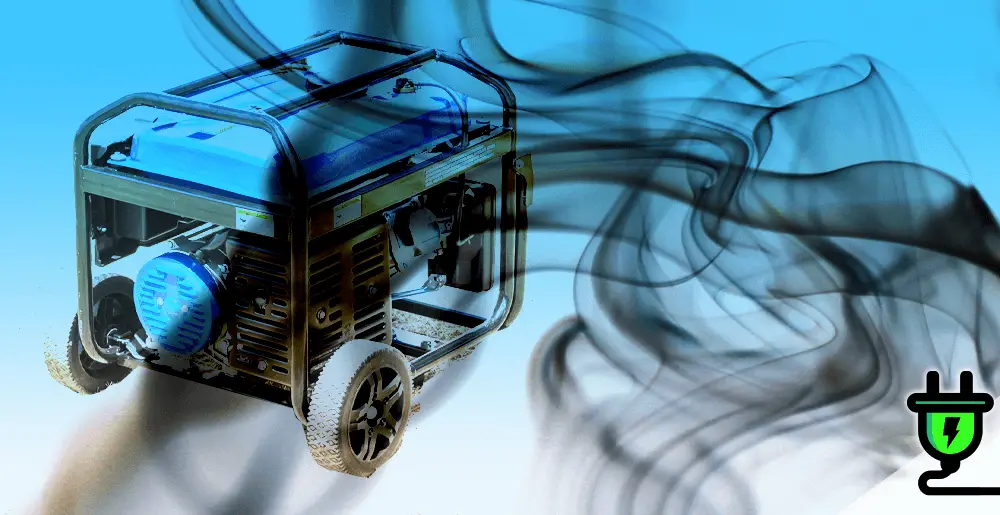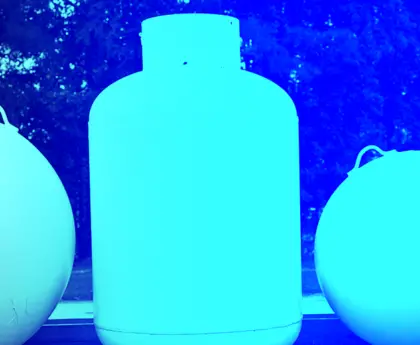Have you ever asked yourself, can you run a portable generator in a shed? You are probably already aware that you can’t have a running portable generator in your house, but what about in a shed?
Portable generators cannot be run in enclosed spaces, and that includes sheds. There are several associated risks, including carbon monoxide poisoning, fire hazards and burn risks. Portable generators do need to be protected from rain damage, but your shed is not a safe spot for your generator.
Fact is, it’s never safe to run your portable generator in the shed even if the doors are open or using a fan to expel the exhaust fumes.
The risk of carbon monoxide (CO) poisoning from the generator could kill you. CO is a colorless, odorless gas produced when burning fossil fuels like natural gas or other fuels that contain carbon.
Breathing in high levels of CO can cause headaches, dizziness, and vomiting, and in extreme cases can be fatal.
In this post, we’ll look in more detail at how to safely use and protect a portable generator while it’s running, and why it should never be used in a shed.
Why Can’t You Run a Portable Generator In a Shed?
Portable generators need lots of airflow to operate safely. And while it might seem like a good idea to run a generator in a shed, they simply do not have sufficient ventilation and airflow to be a good spot for one.
In fact, portable generators should have at least three to four feet of open space for proper operation, as recommended by OHSA.
There are several reasons for this. Not only does it help cool the generator, but also allows any CO produced from the machine to properly disperse into the atmosphere.
Truth is, portable generators need a good degree of airflow so that the fumes can escape, rather than building up around the generator and creating a fire hazard. As an example, a generator’s exhaust’s temperature can reach as hot as 575 to 935 degrees Fahrenheit!
Carbon monoxide poisoning is extremely difficult to detect and is probably the biggest hazard however, but the fire risk should not be dismissed either.
So when asked the question, can you run a portable generator in a shed, answer is always going to be no. It’s just not safe for the operator or the generator.
Can I Run a Generator in a Shed With the Door Open?
Even if you have the door(s) and windows open, sheds are just too well sealed for the fumes from the generator to escape.
This puts you at high risk of carbon monoxide poisoning, which can kill you in 5 minutes. Not to mention running a generator in a shed massively increases the fire risk too.
How Much Ventilation Does a Portable Generator Need?
Proper ventilation is critical when running a portable generator. Always keep the generator at least 20 feet away from the house.
Try to position the generator so that the exhaust fumes are in the opposite direction of any windows or doors.
You might be surprised how far exhaust fumes can spread. They can travel for several hundred feet on windy days.
And if you plan to build a custom enclosure for your generator, be sure to add at least 36 inches of open space around the generator.
This will provide the necessary cooling and ventilation for the unit.
Without enough ventilation, carbon monoxide poisoning becomes a serious concern. It can happen quickly and without warning.
Symptoms of carbon monoxide poisoning to be aware of include headache, dizziness, nausea, and fatigue. If you suspect carbon monoxide poisoning, get to fresh air immediately.
However, the good news is, some portable generators feature a built-in sensor that triggers an automatic shutoff if CO build up rises to a dangerous level.
But this still doesn’t mean it’s safe to run in an enclosed space, such as a shed. It just provides a safety measure to help protect you.
How Can You Keep A Portable Generator Dry?
You can now see why the answer to “can you run a portable generator in a shed” is a definite no, but how else can you keep your generator dry?
After all, it cannot be operated in wet conditions either, so you need some form of shelter.
Ideally, you should purchase a canopy or generator enclosure kit that has been specifically designed to keep a generator dry and allow the fumes to vent away from it.
The manufacturer you purchase the generator from may stock these, or you may have to buy one from a separate seller, but don’t neglect this step.
If you’re handy with tools, you can build a custom enclosure for your generator. This will protect it from the elements and keep you safe from CO positioning.
Building an enclosure with the proper generator shed exhaust system will expel exhaust fumes safety out into the atmosphere.
Final Thoughts
Portable generators are a lifesaver during a power outage, but only if they are used safely.
Finding a suitable spot for a portable generator can be challenging, but it is critical that you take the time to do this. Do not just put your generator in the shed and hope for the best; this is not safe at all and could lead to a fire, an explosion, or even death.
Following these tips will help ensure that you and your family are safe during a power outage.





